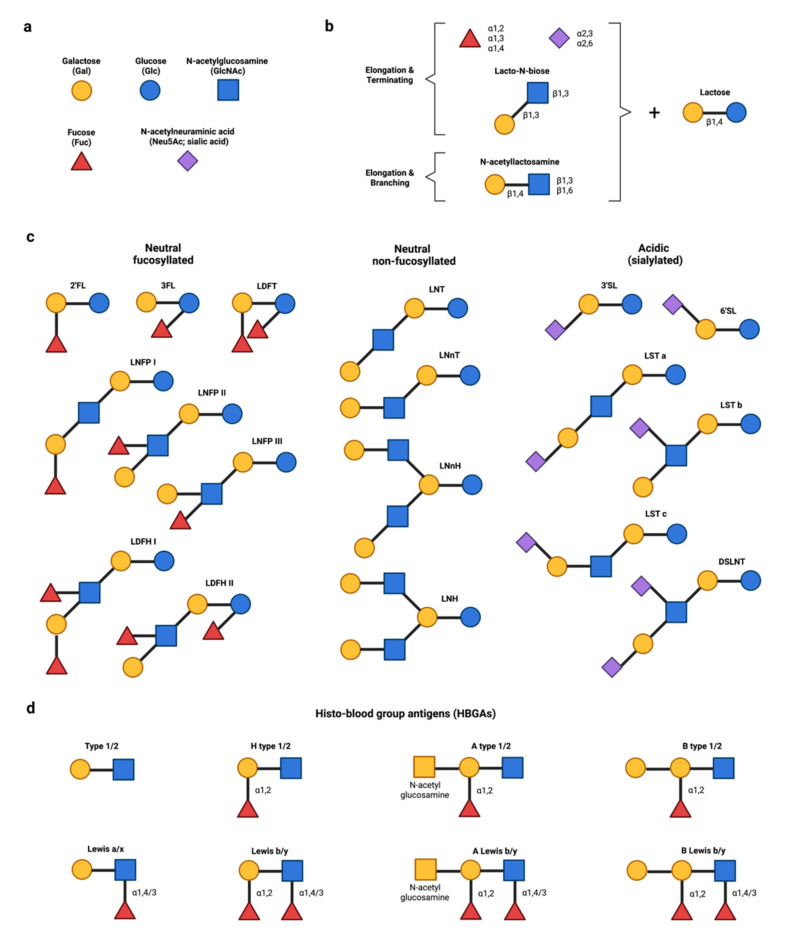Figure 1.
Structural diversity of hMOS and their analogous human blood group antigens (HBGAs). (a) HMOS are constituted from five different monosaccharides. (b) All hMOS have lactose at the reducing end as the building block. The structural diversity of hMOS is due to combinations of elongation with N-acetyllactosamine, Lacto-N-biose, fucose and/or sialic acid. (c) Selected hMOS structures commonly found in human milk, some of which are further discussed in this review. (d) HBGAs serve as attachment receptors for several viruses. Fucosylated hMOS (e.g., 2′FL) can structurally mimic receptors, thereby acting as decoys (competitive inhibitors) of HBGAs. Abbreviations: 2′FL, 2′-fucosyllactose; 3FL, 3-fucosyllactose; 3′SL, 3′-sialyllactose; 6′SL, 6′-sialyllactose; hMOS, Human milk oligosaccharides; DSLNT, Disialyllacto-N-tetraose; LDFH, Lacto-N-difucohexaose; LDFT, Lactodifucotetraose; LNFP, Lacto-N-fucopentaose; LNH, Lacto-N-hexaose; LNnH, Lacto-N-neohexaose; LNT, Lacto-N-tetraose; LNnT, Lacto-N-neotetraose; LST, Sialyllacto-N-tetraose.

